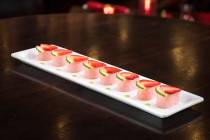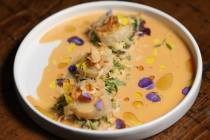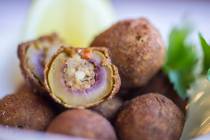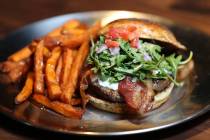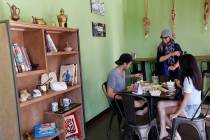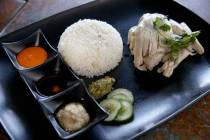Kabuki offers a decidedly Americanized take on Japanese cuisine
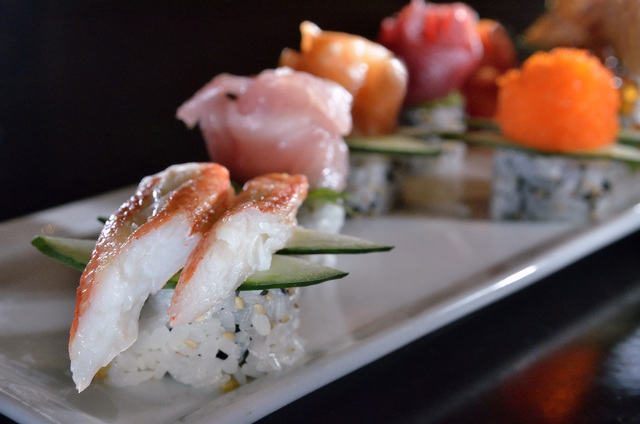
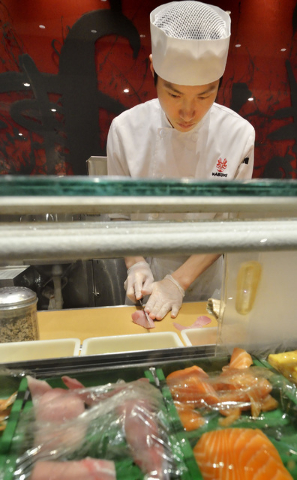


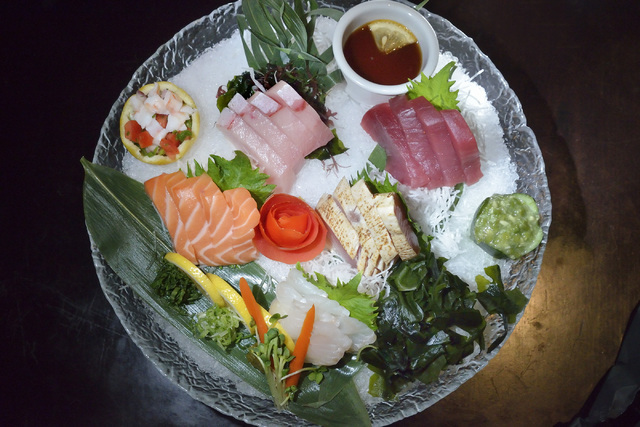
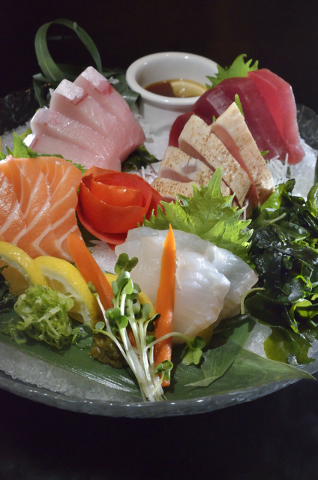
I guess you have to be of a certain age to appreciate this, but I can recall when “Japanese steakhouses” were downright exotic. If you remember the era, you no doubt remember the “witticisms” that traveled from chef to chef and restaurant to restaurant — the “Japanese snowstorm,” “Japanese Parkay,” “Japanese volcano” and on and on.
Then sushi came along, and not for nothing were most of us introduced to it via the California roll, that tame combination of cucumber, avocado and “krab,” where the most offbeat part was the nori hidden inside. (And as a side note, the California roll actually originated in Canada — as a sort of training wheels — and reportedly is pretty popular in Japan these days. But I digress.)
Nowadays, we can find Japanese restaurants all over the place, in Las Vegas and most of the rest of the country. Most of them offer the triumvirate of teppanyaki (what we used to call “Japanese steakhouse”), sushi and an assorted menu of tempura, katsu, sukiyaki and the like.
If you want a really authentic Japanese restaurant, you’re most likely to wander into the little places in and around Chinatown along Spring Mountain Road and its environs. But if you want Americanized Japanese, you go to a place like Kabuki, and not that there’s anything wrong with that.
What drew me to Kabuki was the fact that it offered hot-stone cooking, which tried to be a trend around a decade or so ago but never quite caught on. Yes, it’s a bit of a gimmick, but I was curious about what they’d do with it.
The restaurant offers hot-stone cooking as an appetizer or entree, and we decided on the latter, ending up with seafood ($24.95) because they were out of the wagyu beef. We were brought a large ceramic vessel with a hefty chip out of one side (not on a food-contact surface, but still …) with a heated stone placed in the center. With it, we were brought a pair of tongs and a little spatula-like implement and a platter with raw scallops, shrimp and sections of crab leg, plus enoki and shiitake mushrooms, asparagus, onions and kabocha, also known as Japanese pumpkin.
So how was it? Smoky; we went home coated with it. Ensuring it wasn’t over- or under-cooked was up to us, and we did a pretty good job, but everything was unseasoned — a positive in that the flavors were pure, if some of them (we’re talking to you, mushrooms) a little bland. Helping a bit was the yuzu salt, ponzu and cilantro vinaigrette served on the side for dipping.
While we were going with gimmicks, we figured we might as well go big, with the Tokyo Quesadilla ($5.95). This one sounded a lot like fusion confusion but turned out to be really good, crisp wonton skins stuffed with mozzarella and folded in half, then topped with a tomato salsa that got some kick from minced jalapeno. And so you had the crisp but also melty neutral base, topped with cool and a kick of fire, for great contrasts in textures and flavors.
We went a little more traditional with a starter of agedashi tofu ($6.95), fried until the exterior was crisp but the interior remained creamy, and bathed in a pungent soy-based liquid with some minced green onion and lots (and lots) of ginger.
Snow crab nigiri sushi ($6.50) is a rarity in these parts, and the two pieces we were served were excellent, the fresh, sweet crabmeat overhanging the rice on both ends. And the cilantro albacore roll ($12.95) was a pleasing mix of flavors and textures, the interior of crisp shrimp tempura and cream cheese, with the mild albacore draped over and sprinkled with fresh cilantro, a cup of the same cilantro vinaigrette a well-considered complement.
Service throughout was OK but only just, our server, who seemed preoccupied with the hot-stone dish, completely forgetting the rice that was to go with it.
As for atmosphere, Kabuki has the red accents, the wood and all of the other things we associate with Japanese cuisine but is kind of a big barn of a place, with a feel that’s overall American.
Which, we’d say, is fitting. Not that there’s anything wrong with that.
Las Vegas Review-Journal restaurant reviews are done anonymously at Review-Journal expense. Email Heidi Knapp Rinella at hrinella@reviewjournal.com. Find more of her stories at www.reviewjournal.com and follow @HKRinella on Twitter.
Review
Kabuki Japanese Restaurant, 400 S. Rampart Blvd. in Tivoli Village (also in Town Square); 702-685-7776
The essence: A Japanese restaurant with a decidedly American nature — not that there’s anything wrong with that.










